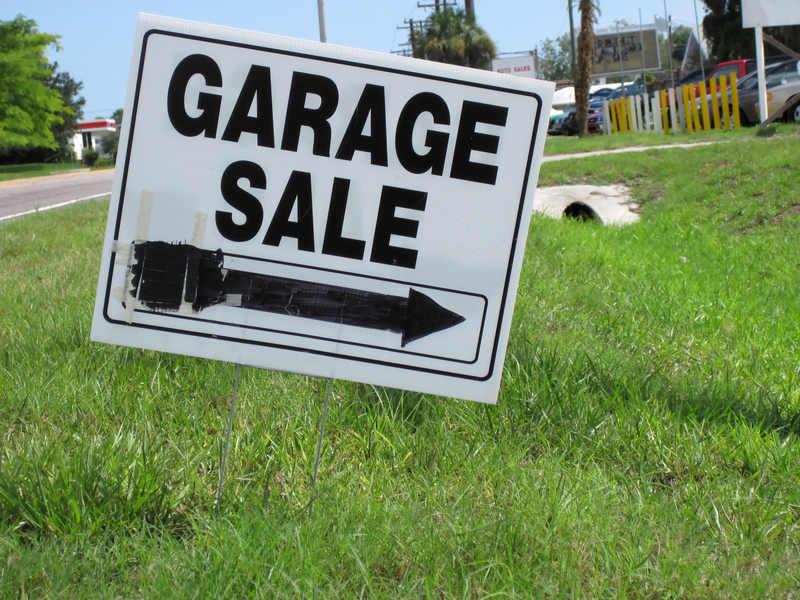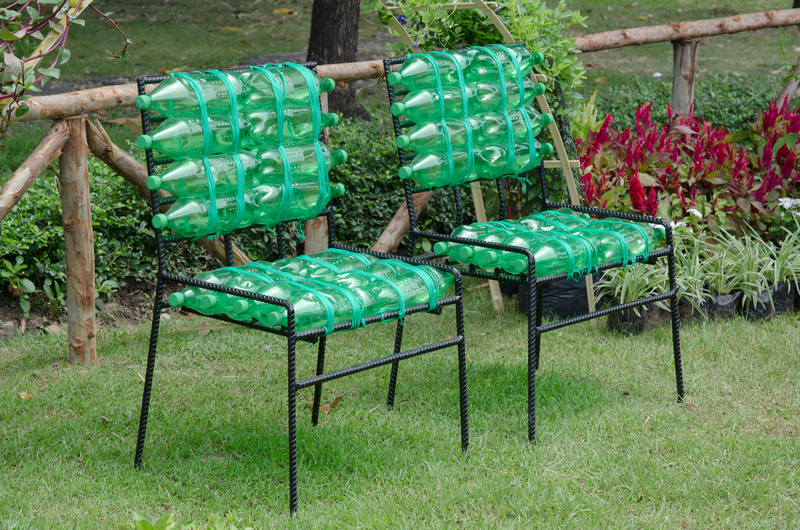Guidelines for Safe and Sustainable PPE Waste Disposal
Personal Protective Equipment (PPE) has become an essential part of daily life in today's world. From healthcare settings to public spaces, PPE such as masks, gloves, face shields, and gowns play a crucial role in safeguarding individuals from infectious diseases and hazardous substances. However, the surge in PPE usage has led to a significant increase in waste, raising serious environmental and public health concerns. This comprehensive guide provides actionable guidelines for safe and sustainable PPE waste disposal, ensuring both human well-being and environmental protection.

Understanding the Importance of Sustainable PPE Disposal
The widespread adoption of PPE during global health crises, like the COVID-19 pandemic, has highlighted the double-edged sword of its usage. While essential for infection prevention, improper disposal of PPE has contributed to pollution, wildlife endangerment, and the spread of contaminants. It's not just about safety--it's about sustaining our planet while maintaining public health.
Why Is Proper PPE Waste Disposal Crucial?
- Public Health Protection: Contaminated PPE can transmit infectious agents, posing risks to sanitation workers and the community.
- Environmental Conservation: Non-biodegradable PPE items often clog waterways, harm wildlife, and add to landfill burden.
- Regulatory Compliance: Many governments have stipulated disposal protocols for hazardous PPE waste, and non-compliance can result in hefty fines.
Types of PPE Waste and Associated Risks
*Identifying the different types of PPE waste helps in adopting appropriate disposal strategies*
- Masks (surgical, N95, disposable cloth masks)
- Gloves (latex, nitrile, vinyl)
- Gowns and protective aprons
- Caps, shoe covers
- Face shields
- Goggles
- Reusable masks and coveralls
PPE used in healthcare and high-risk environments often contains hazardous biological materials that require special handling. Even community-used PPE can harbor pathogens, meaning that responsible PPE waste management is important for everyone--not just medical professionals.
Best Practices for Safe PPE Waste Management
To minimize health hazards and environmental impacts, follow these essential safe disposal guidelines for PPE waste:
1. Segregate PPE Waste from General Waste
- Designate containers specifically for used PPE. Mark bins clearly with biohazard or PPE waste labels.
- No mixing! Never toss used masks or gloves with recyclable or organic waste.
2. Use Appropriate Waste Containers
- Use lined, leak-proof, and preferably foot-operated bins to minimize contact and prevent contamination.
- Bin liners should be strong enough to withstand punctures from sharp objects or broken PPE components.
3. Avoid Touching PPE Waste Directly
- Always remove PPE by the straps or non-contaminated areas.
- Dispose of used items immediately after use to avoid cross-contamination.
4. Separate and Treat High-Risk PPE Waste
- PPE used by infected persons, healthcare workers, or laboratory staff should be treated as hazardous or medical waste.
- These should be collected in red or yellow bags (according to local guidelines) and handled by trained personnel.
5. Label and Store Collected PPE Waste Safely
- Mark containers with clear, visible signs stating "PPE Waste Only".
- Keep waste containers in secure, ventilated, and accessible locations, away from public contact areas.
Sustainable Methods for PPE Waste Disposal
Traditional waste disposal methods like incineration and landfilling are not always environmentally friendly, especially for the growing volume of PPE waste. Adopting sustainable disposal methods minimizes environmental impacts and promotes circular economy goals.
1. Incineration with Emission Controls
- Incineration is effective for destroying pathogens, especially for hazardous medical PPE waste.
- Modern incinerators with advanced filtration systems reduce harmful emissions.
2. Autoclaving and Steam Sterilization
- Autoclaving uses steam to disinfect contaminated PPE before shredding or recycling.
- This method reduces infectious risk and makes the waste safer to handle.
3. Chemical Disinfection
- Certain chemicals can neutralize pathogens present on PPE before disposal.
- Following manufacturer and local health guidelines ensures effective and safe chemical use.
4. Mechanical Recycling
- Recent innovations enable some PPE, especially plastic-based items, to be recycled into construction materials, road surfaces, or energy feedstock.
- Check with local governments and recycling companies regarding facilities equipped to process recycled PPE waste.
5. Composting Biodegradable PPE
- PPE made from biodegradable materials can be composted under industrial composting conditions, reducing landfill volumes.
- Careful separation and validation are necessary to distinguish truly compostable PPE from regular plastics.
Note: Home composting is not recommended for PPE due to potential biological contamination risks.
At-Home PPE Waste Disposal Tips
Households play a pivotal role in controlling the spread of disease and reducing environmental harm from PPE waste. Practice these easy steps at home for responsible PPE disposal:
- Seal used PPE in a plastic bag before placing it in your main waste bin to limit exposure to others.
- Wash your hands immediately after disposing of PPE.
- *Disinfect bin lids and surrounding areas regularly*
- Do not throw PPE into recycling bins--contamination can compromise entire recycling batches.
- Stay updated with local PPE waste collection policies, as some municipalities offer dedicated collection services.
Educate Household Members
- Teach children and elderly family members about the importance of proper PPE handling and disposal.
- Display simple visual instructions near waste bins as reminders.
Workplace and Healthcare Facility PPE Waste Protocols
In workplaces and medical establishments where PPE use is intensive, systematic disposal practices are non-negotiable.
Essential Steps for Workplaces:
- Establish clear PPE waste policies. All staff should receive regular training on safe disposal practices.
- Place multiple PPE disposal bins at high-traffic areas, entrances, and exits.
- Supply adequate PPE waste containers to avoid overflow and contact risks.
- Partner with certified waste management services for collection, treatment, and documentation.
Healthcare Facility Recommendations:
- Adhere to the latest health department and WHO guidelines for biohazardous waste handling and transport.
- Use double-bagging for heavily contaminated or high-risk waste.
- Install hands-free bin operations (foot pedals, no-touch lids) to curb germ transfer.
- Keep records of PPE waste quantities generated and methods used for traceability and review.
Innovative Approaches to PPE Waste Minimization
Reducing the amount of PPE waste generated in the first place is the most effective way to ensure sustainability. Consider the following strategies:
Promote Reusable PPE Options
- Where safe and permitted, opt for reusable masks, gowns, and shields made from durable, washable materials.
- Implement strict cleaning protocols to maintain safety and function of reusable items.
Support PPE Take-Back Programs
- Some manufacturers and NGOs run take-back or recycling programs for PPE. Participate to ensure safe processing and material recovery.
- Encourage local governments to initiate drop-off points for large-scale PPE recycling.
Source Biodegradable and Eco-Friendly PPE
- Choose certified compostable or biodegradable PPE products when available.
- Educate staff and community members on the correct methods to compost or dispose of eco-friendly PPE options.
Encourage Proper Usage
- Educate users on when PPE is truly needed to avoid unnecessary consumption.
- Discourage double-masking or glove use unless specifically indicated for safety.
Regulations and Global Guidelines on PPE Waste Disposal
National and international agencies have established uniform standards for PPE waste management to streamline safety practices:
- World Health Organization (WHO): Advocates for safe segregation, collection, and treatment of healthcare waste, including PPE, with guidance on non-burn alternatives.
- Environmental Protection Agency (EPA): Recommends PPE waste as municipal solid waste unless known to be contaminated with infectious agents.
- Local Governments: Often issue specific regulations and disposal protocol for PPE waste in public areas, workplaces, and health facilities.
Regularly consult your local health and waste management authorities for up-to-date rules, as regulations may evolve in response to ongoing public health situations.

Risks of Improper PPE Waste Disposal
Poorly managed PPE waste can result in:
- Community spread of infectious diseases
- Harm to waste collectors and sanitary staff
- Pollution of soil and water resources
- Physical hazards to urban wildlife and pets
- Long-term build-up in landfills, leading to microplastic contamination
To mitigate these risks, society must adopt and enforce robust sustainable PPE disposal guidelines.
Conclusion: Commitment to Safety and the Environment
Safe and sustainable PPE waste disposal is not just a regulatory requirement--it's a social and environmental responsibility. Whether you are at home, in your workplace, or managing a healthcare facility, following proper PPE waste management practices protects frontline workers, the wider community, and the planet for future generations.
As the world strives to balance pandemic preparedness with environmental stewardship, let's commit to:
- Educating ourselves and others on safe PPE waste management practices
- Minimizing unnecessary use and choosing sustainable PPE alternatives
- Supporting innovations and policies in PPE recycling and disposal
Together, informed and responsible action can turn the tide on PPE-driven pollution and build a safer, more sustainable future.
